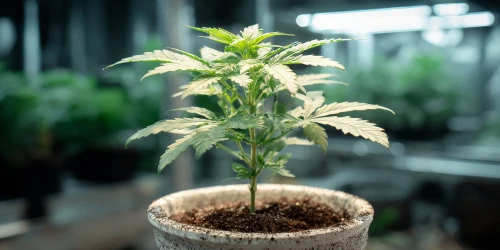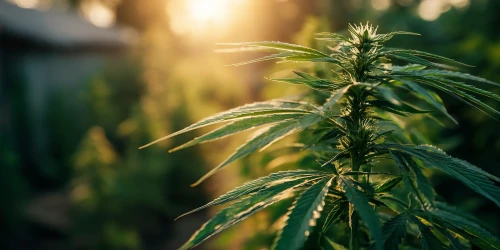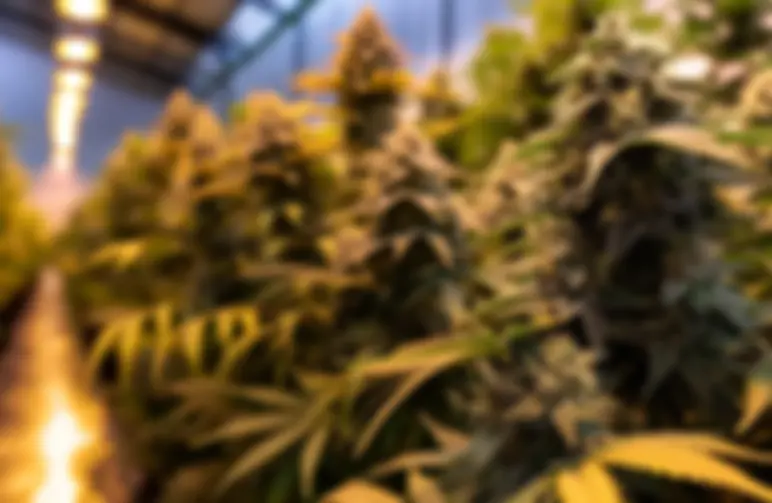If you've ever wondered why your cannabis plants suddenly go from growing leaves to dense, resin-filled buds, it's because of how they see light. Unlike autoflower cannabis seeds, photoperiod cannabis seeds need a certain amount of light each day to bloom. This trait has affected how growers plan their seasons for decades, from backyard hobbyists in California to greenhouse businesses in Colorado.
Key Takeaways
- Photoperiod cannabis depends on day length to trigger flowering.
- Indoors you control the flip with timers; outdoors the seasons do it for you.
- Longer veg equals bigger yields, but only if you protect the dark cycle.
- Match cultivar timing to your climate and plan ahead for late-season weather.
Understanding how photoperiod seeds respond to light cycles is essential if you want consistent yields and quality. In this guide, you’ll learn the science behind light-dependent flowering, how to time the flip indoors and outdoors, and practical tactics to use light control to your advantage.
What Are Photoperiod Cannabis Seeds?
Photoperiod seeds are varieties that depend on specific light and dark periods to move through their life stages. In nature, plants veg during the long days of summer, then switch into flowering as nights lengthen toward fall.
- Vegetative phase: thrives with long days (commonly 18 hours of light indoors).
- Flowering phase: triggered when plants receive about 12 hours of uninterrupted darkness.
Unlike autoflowering strains, which flower based on age, photoperiod plants give you more control: you decide when to flip them from growth to bloom.
Why Light Cycles Matter
Light is both energy and information. Cannabis uses a pigment called phytochrome to sense the length of the dark period. When nights are long enough, the plant initiates flowering hormones and transitions into bloom.
- Indoors: You control the flip. Change timers from 18/6 (light/dark) to 12/12 and flowering begins within days.
- Outdoors: Nature decides. Plants start flowering in late summer as daylight naturally drops below ~14 hours depending on latitude.
Regional Reality Check: California vs Colorado
California: With a Mediterranean climate, photoperiod seeds thrive outdoors. Plants can veg until August, with harvests in October or November. Many growers pull two harvests by starting seedlings under lights and moving them outdoors in late spring.
Colorado: A shorter season and the threat of early frost complicate timing. Outdoor photoperiods often need greenhouses or light-deprivation covers to finish before cold snaps. Planning the flip is critical to beat early autumn weather.
Photoperiod Pros and Cons
Advantages
- Larger yields from extended veg time.
- Flexible training (topping, LST, SCROG) for canopy control.
- Stable genetics for cloning and breeding projects.
Challenges
- Longer total grow time than autoflowers.
- Strict dependence on light schedules; light leaks can cause stress or hermaphroditism.
- Outdoor harvests risk late-season mold, storms, or frost in some regions.

Indoor Growing With Photoperiod Seeds
Indoors, you have full command of the calendar. Use it.
- Vegetative schedule: 18–24 hours of light per day. More light equals faster growth, but watch your power draw and heat.
- Flowering schedule: A strict 12/12 light and dark cycle. Protect the dark window from any stray light.
- Training: Topping, fimming, and supercropping extend veg but yield massive returns after the flip.
Pro tip: Sit in your grow space during “lights off.” If you can see anything, so can your plants. Seal zipper pinholes, cover indicator LEDs, and use light-proof ducting.
Outdoor Growing With Photoperiod Seeds
Outdoors, timing is everything and the sun is your timer.
- Planting: Start after the last frost as days lengthen. Earlier starts mean bigger root mass and stronger frames.
- Vegetative growth: Runs until late July or August at most latitudes.
- Flowering: Triggers in late summer; expect 8–12 weeks to harvest depending on cultivar.
Light deprivation (“light dep”): Blackout tarps create an early artificial night, letting you flower in midsummer and harvest before autumn rains. It’s a powerful tool in humid regions where bud rot threatens late-season crops.

Photoperiod vs Autoflower: Which Fits Your Goals?
- Choose photoperiods if you want maximum yield, advanced training control, and the ability to keep/clone mothers.
- Choose autoflowers if you need speed, simplicity, or stealth in tight spaces.
Many growers run both: autos for a quick summer pull, photos for a big fall payoff.
Dialing In Schedules and Timers
- Veg: 18/6 is the most common; 20/4 can push growth a bit faster. Plants still appreciate a dark window to respire.
- Flower: 12/12 is the standard. Keep temperature and humidity stable across the dark period to prevent condensation and mold.
- Sunrise/sunset simulation: Dimmable LEDs or staged circuits can reduce plant stress at flip-on and lights-off.
Preventing Light Stress and Hermaphroditism
- Eliminate all stray light during the dark cycle.
- Avoid drastic schedule changes; if you must adjust, do it once, cleanly.
- Keep environmental stress low (heat spikes, drought, overfeeding) during early flower.
Feeding and Training Around the Flip
- Pre-flip: Final canopy shaping, defoliation for airflow, and transplant (if needed) 7–10 days before the switch.
- Weeks 1–3 of flower: Plants stretch. Support branches, maintain balanced nitrogen, then taper toward bloom-focused nutrition.
- Mid–late flower: Prioritize potassium and micronutrients, moderate EC, and keep VPD in the cultivar’s comfort zone.
Common Light-Cycle Mistakes to Avoid
- Opening the tent during lights-off to “just have a look.”
- Using power strips or gear with bright LEDs inside the grow space.
- Letting timer batteries die or using cheap timers that drift.
- Flipping plants that are rootbound or stressed; recover first, then flower.









